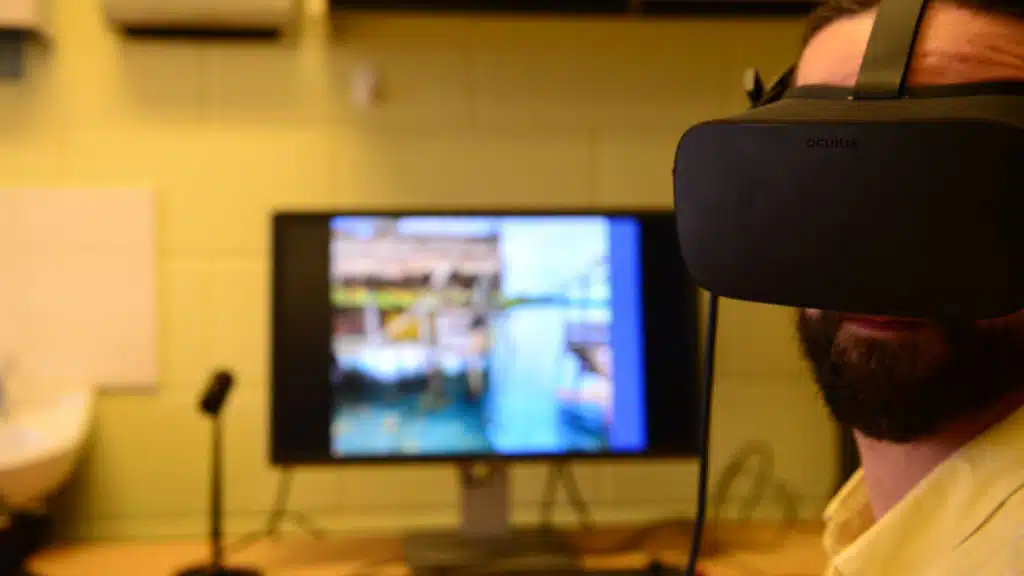Queensland Fresh Scientist uses virtual reality in a quest to find new ways of treating the persistent pain that affects 1 in 5 people
For immediate release, Monday 5 September, 2016
Treating the pain that persists after injuries have healed may mean re-training the brain using tools like virtual reality rather than managing the pain using drugs.
These are the findings of Griffith University researcher, Dr Daniel Harvie who is one of ten 2016 Queensland Fresh Science finalists.
“If someone is still experiencing pain three months after injury, this may be due to the brain losing its precision in perceiving what is happening in the body,” says Dr Harvie.
“This can be due to the associations that link pain to the activities or movements that caused it. For example, if you badly sprained an ankle playing basketball you may still feel pain when you are on a basketball court many months after healing.
“It’s the brain’s way of trying to protect you from danger. Like the classic Pavlov experiment where dogs came to salivate when they heard a bell that was associated with food, the things that are repeatedly associated with pain, might in turn trigger it”
This finding paves the way for treating chronic pain by breaking the associations the brain forms between pain and the things that trigger it.
Daniel has experimented with virtual reality as a way of breaking such associations.
“Movement is something commonly linked with pain,” says Dr Harvie. “For example, moving your neck after a whiplash injury.
“We have used virtual reality to give a person the feeling that they are moving their neck a lot more than they actually are. Our early results are show that this pain with movement is dependent on the brain’s perception of movement, not actual movement.
“I am confident that treatments that target the brain rather than the body will revolutionise how we deal with the pain that many of us face on a daily basis.”
Fresh Science is a national competition helping early-career researchers find, and then share, their stories of discovery. The program takes up-and-coming researchers with no media experience and turns them into spokespeople for science, giving them a taste of life in the limelight, with a day of media training and a public event in their home state.
Queensland Fresh Science is supported by: Queensland Government; Queensland University of Technology (QUT); University of the Sunshine Coast (USC); The University of Queensland; and Econnect Communication.
See a short video explaining Daniel’s work.
We can provide photos and broadcast quality footage of Daniel at work.
For media, video and photography assistance:
Dr Jane Ilsley, jane@econnect.com.au, 0450 203 151
For interview:
Dr Daniel Harvey, Postdoctoral Fellow, School of Allied Health Sciences, Griffith University, d.harvie@griffith.edu.au, phone 0418 826 254






 Fresh Science is on hold for 2022. We will be back in 2023.
Fresh Science is on hold for 2022. We will be back in 2023.